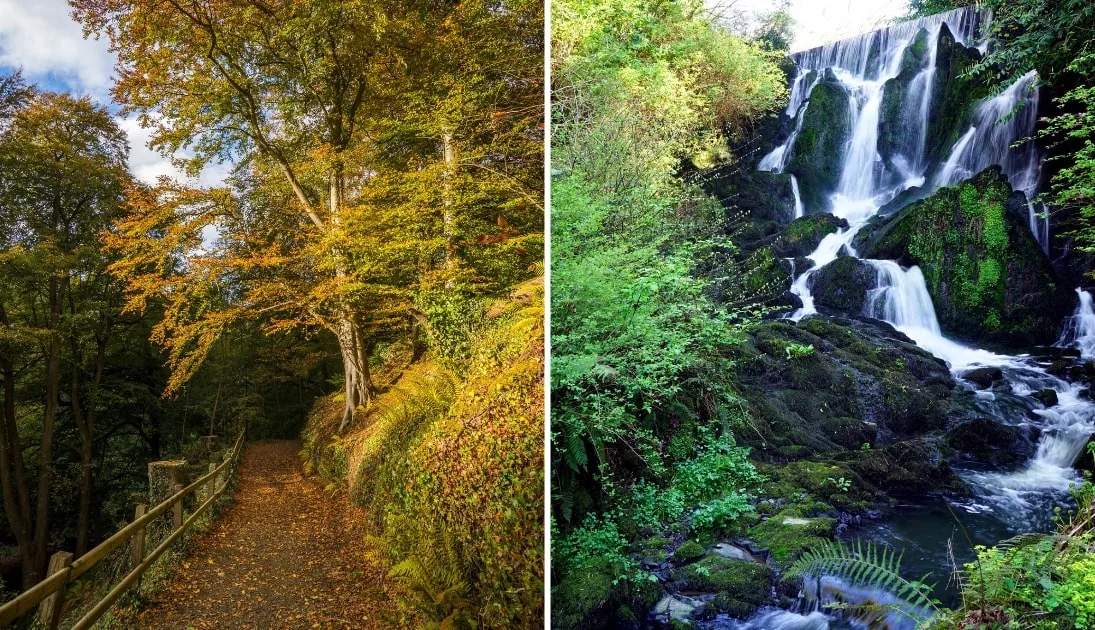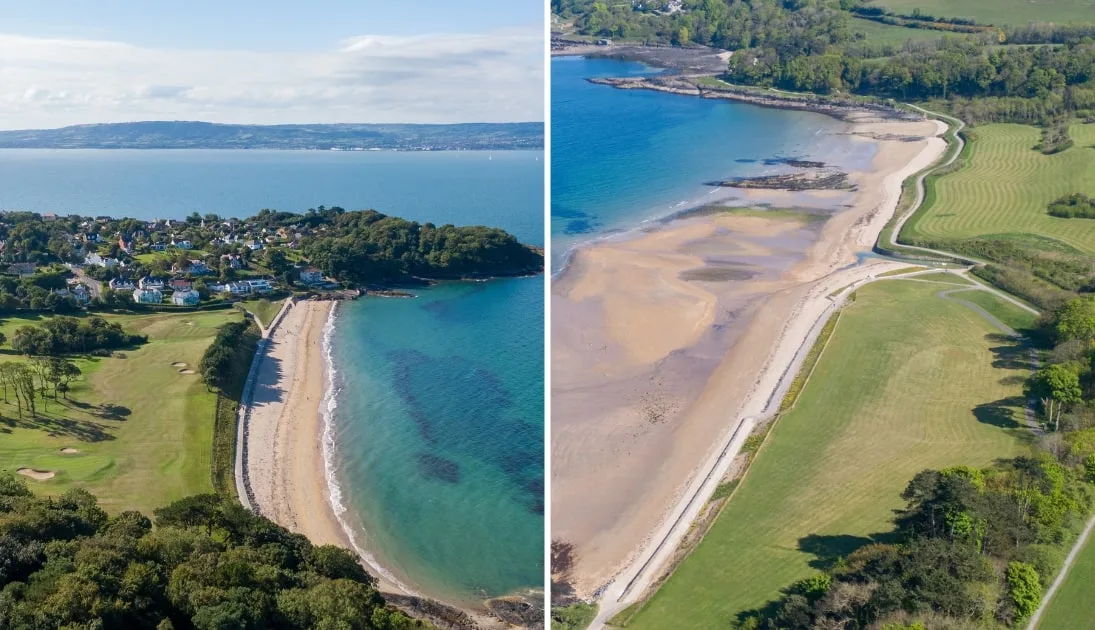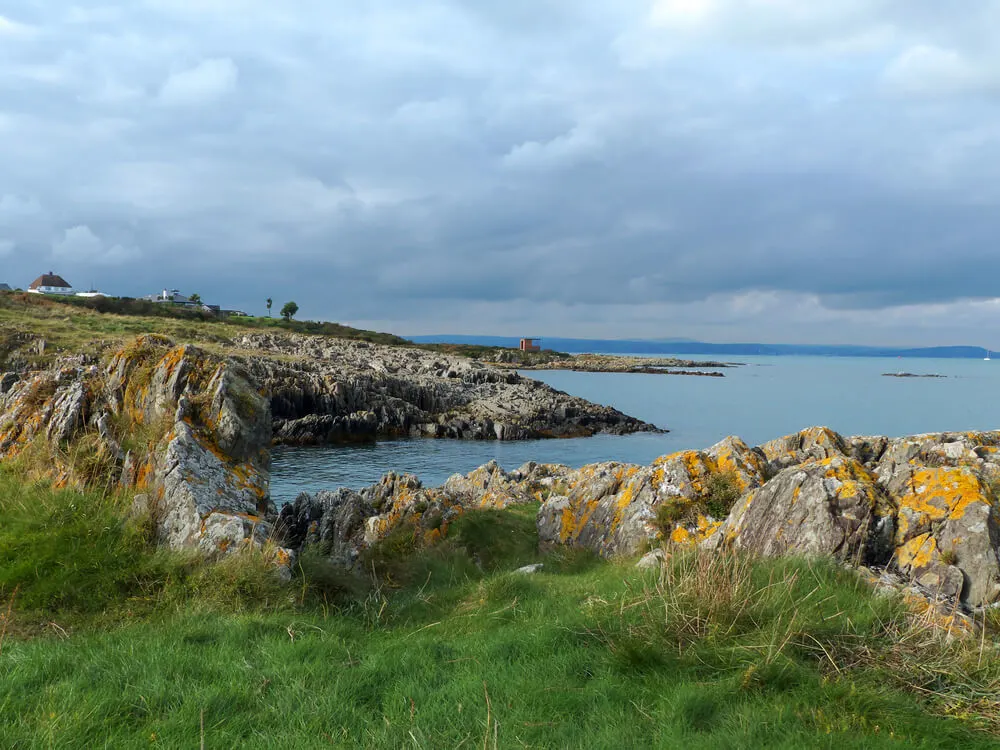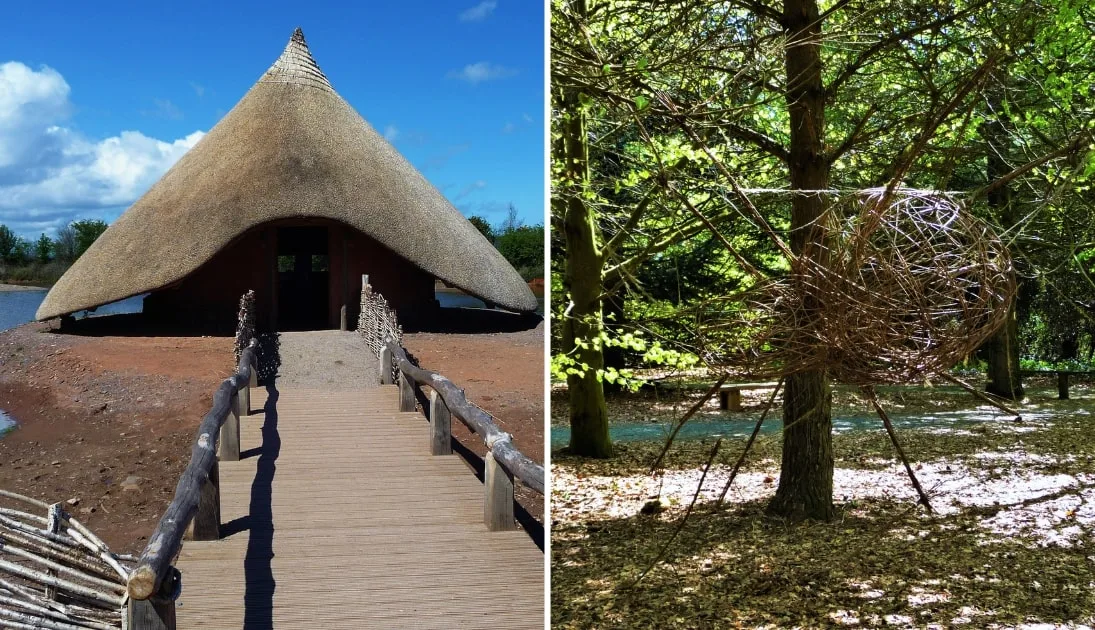The Ards Peninsula is a bit of a funny one.
Despite its charming towns, stunning coastal scenery, historical sites and endless attractions, it’s one of the most overlooked places to visit in Northern Ireland.
However, to those in the know, the Ards Peninsula is a little slice of paradise. Discover everything from things to do to where to eat, sleep and sip below!
Some quick need-to-knows about the Ards Peninsula

Photos via Shutterstock
So, it’s worth reading the points below before you dive into the guide, as they’ll get you up-to-speed on the Ards Peninsula nice and quickly:
1. Location
Located on the northeast coast of Northern Ireland, the Ards Peninsula in County Down runs north-south separating Strangford Lough from the North Channel of the Irish Sea. Despite its remoteness, it is just 10 miles or so east of Belfast.
2. A hidden gem
Beyond the dramatic Mourne Mountains, the Ards Peninsular is somewhat overlooked by visitors to the area. However, it has lots of worthy attractions, historic buildings, archaeological sites and places of interest. It’s a great destination for a romantic escape or a coastal break away from city traffic and crowds.
3. Lovely seaside towns
Running up the coast of the Irish Sea there are several pretty seaside towns including Ballyhalbert, the easternmost point in Northern Ireland. Other coastal villages include Cloughey, a picturesque village and expansive sandy beach, Kearney village and the fishing hub of Portaferry at the mouth of Strangford Lough.
4. The ferry
The Strangford Portaferry Ferry is a handy (and scenic!) little time saver that takes you to and from the Ards Peninsula. It takes between 6 and 10 minutes as it crosses between the towns of Strangford and Portaferry.
About the Ards Peninsula

Photos via Shutterstock
Named after Aird Uladh meaning “Peninsula of the Ulstermen:”, the Ards Peninsula is a remote area separated largely from the mainland by the Strangford Lough.
Long ago it was part of the kingdom of Ulaid and home to the Ui Echach Arda Gaelic Irish clan. Conquered by the Anglo-Normans (led by John de Courcy) in the late 12th century, the Earldom of Ulster as it was known collapsed.
For the next three centuries, the Hiberno-Norman Savage family controlled the south part of the peninsula known as the Upper Ards, while the northern area (Lower Ards) became part of the Clannaboy kingdom of Gaelic Ireland. The area was colonised in the early 1800s by Scottish Protestants under the Plantation of Ulster.
The main towns on the Ards Peninsula are Newtonards at the north end of Strangford Lough, vibrant Donaghadee with its lighthouse and golf course, neighbouring Millisle, Portavogie and Portaferry.
Things to do on the Ards Peninsula
One of the reasons that a visit to the Ards Peninsula is one of our favourite things to do in Down is due to the volume of things there are to see and do.
Below, you’ll find everything from walks and scenic drives to museums, beaches and much more.
1. Ulster Folk Museum

Photos by National Museums Northern Ireland via Ireland’s Content Pool
The Ulster Folk Museum is a living museum of thatched cottages, farms, traditional crops, schools and shops as they would have been 100 years ago.
Costumed guides give visitors a potted history of the area and there are heritage breed farm animals and country crafts to admire.
Open from 10am (closed Mondays), it’s an interesting place to step back in time to 20th century Ulster. There’s a gift shop and tea room onsite to make it a full day out.
2. Crawfordsburn Country Park

Photos via Shutterstock
Looking out into Helen’s Bay, Crawfordsburn Country Park is the most popular country park in Ulster, and you’ll quickly see why.
Take a walk along the North Down Coastal Path and experience two beautiful sandy beaches and miles of scenic riverside trails.
Wooded glens, a cascading waterfall and stunning views across Belfast Lough make this a natural wildlife retreat for walkers, birdwatchers and anyone who enjoys natural beauty.
3. Helen’s Bay Beach

Photos via Shutterstock
Helen’s Bay Beach is one of the most impressive beaches in Down. It’s one of the best beaches near Belfast with a Green Coast Award and excellent water quality.
The gently sloping sand makes it ideal for safe swimming and bathing. The Visitor Centre provides local information and first aid.
There’s also a cafe, car parking, picnic tables and a path to the beach with wheelchair access. Keep a lookout for porpoises, seals, terns and Eider ducks.
4. Orlock Point

Photo via Shutterstock
Owned and managed by the National Trust, Orlock Point has a diversity of plants and animals in this semi-natural habitat once roamed by Vikings and smugglers.
There’s a pleasant 3-mile out-and-back walk from the car park (no facilities) passing a stony bay. Cross the Portavo River and standing stone on your left.
Steps lead up to the headland with superb views of the Copelands, Galloway Coast and distant Mull of Kintyre. Continue to Sandell Bay, passing a WW2 lookout before retracing your steps.
5. Mount Stewart

Photos via Shutterstock
Another National Trust gem, Mount Stewart is an impressive 19th century country house and gardens on the east shores of Strangford Lough.
Once the seat of the Stewart family, the Marquesses of Londonderry, the impressive furnishings and contents reveal the lifestyle and history of one of Northern Ireland’s leading political families.
The house includes a stunning private chapel with stained glass windows and the gardens are outstanding with many lush tropical plantings and an octagonal Temple of the Winds eye-catcher.
6. Greyabbey

Photo by John Clarke Photography (Shutterstock)
Seven miles south of Newtonards, Greyabbey (or Grey Abbey) is a pretty village on the eastern shores of the lough. It is named after the Cistercian abbey (1193), now a ruin on the outskirts of the village.
Home of the NT Mount Stewart Estate, Greyabbey is a hub for antiques with several specialist shops for browsing in the charming Georgian and Victorian premises.
Highlights include St Saviour’s Church with its famous light peal of bells and The Wildfowler, a historic coaching inn.
7. Portaferry

Photos via Shutterstock
Head down the peninsula to Portaferry where you can catch a car ferry across the lough to Strangford. The name comes from Port a’ Pheire meaning “landing place of the ferry”.
Known for its pot fishing for crabs and prawns, Portaferry village has a fine town square and ruins of a 16th century tower house known as Portaferry Castle.
The biggest attraction is the Exploris Aquarium and there’s an old windmill on a nearby hill, so there’s plenty to see and do.
8. Knockinelder

Photo via Google Maps
You never know what you might see when you take a stroll along Knockinelder Beach. The sand is popular for sandcastles, ball games, kite-surfing and even horse-riding.
If you fancy a breezy walk, the coastal path leads to NT cottages at Kearney and several more sandy coves near Quintin Castle.
In Irish Cnoc an Iolair means “hill of the eagle”.The nearby Ballyquintin Nature Reserve has many rare flowers and birds.
9. Kearney Village

Photo via Google Maps
And so to Kearney village, which has been carefully restored by the National Trust and is a charming traditional fishing village with views to the Mourne Mountains, Isle of Man and coast of Scotland.
It’s a glorious place to relax on the sandy beach and enjoy the unhurried pace of life. It’s a great place for bird-watching with many oyster-catchers, shelducks, terns, eider ducks and rock pipits in evidence.
From the village there’s a nice walk along the shoreline to Stinking Point.
10. Cloughey Bay Beach
Located on the east coast of the Ards Peninsula, Cloughey Bay Beach is a beautiful 1.5 mile stretch of firm white sand for walking, picnicking and rock pooling.
Access through the dunes is on a boardwalk to avoid destroying the mass of flora and fauna that inhabits the ecosystem in this Designated Area of Special Scientific Interest.
The beach is good for bathing with free parking but no facilities, which is all part of the charm.
11. Burr Point

Photo via Shutterstock
Head off to the easternmost point of Northern Ireland at Burr Point near Ballyhalbert village and harbour. Known as Burial Island, the area was used for Viking burials long ago.
Burr Point is marked by a car park and a landmark circular sculpture with a capital E in it. There’s a disused Coast Guard tower nearby, one of 12 in the Donaghadee District that line the Irish Sea coastline.
Take note of the caravan park at Burr Point; it was an RAF airfield during WW2 which was built to protect Belfast.
12. Ulster Transport Museum

Photo by NearEMPTiness via Wiki Commons
Ulster Transport Museum is located in Holywood on the outskirts of Belfast. It’s a great place to lose yourself in a nostalgic visit admiring old trams, trains and vintage vehicles.
Step aboard and appreciate these historic motors. Admire the DeLorean in the “Museum of Innovation” within a series of galleries that cover land, sky and sea transportation.
Open Tuesday through Sunday, the museum has interactive exhibits and guided tours. Advance booking is recommended as time slots are offered during busy times.
13. Exploris Aquarium
Portaferry is the home of the acclaimed Exploris Aquarium where an underwater adventure awaits!
It’s situated on the shores of Strangford Lough which is a Marine Nature Reserve and home to many species including common seals, basking sharks and Brent geese.
The Aquarium has colourful fish, rays, penguins, turtles, otters and even a crocodile! As well as being a public attraction, the Aquarium also operates as a sanctuary for sick and injured creatures including orphan seal pups.
14. Castle Espie Wetland Centre

Photos via Shutterstock
More local birds and wildlife can be found at Castle Espie on the west side of Strangford Lough with panoramic views.
Run by the conservation charity WWT, this attraction has earned a Gold Award for Green Tourism. Enjoying a tranquil setting, it offers woodland walks, a cafe and play area.
The Wetlands Centre is home to Ireland’s largest collection of waterbirds and has many visiting birds during the migratory season.
In autumn, a huge flock of Brent geese and other waterbirds inhabit the salt marshes, grassland, lagoons and reed beds.
Where to stay around Ards

Photos via Shutterstock
There’s some great places to stay around the Ards Peninsula. Here are a handful of suggestions to consider.
Note: if you book a stay through one of the links below we may make a tiny commission that helps us keep this site going. You won’t pay extra, but we really do appreciate it.
1. Strangford Arms Hotel
Treat yourself to a stay at the well located Strangford Arms Hotel right on the waterfront. This elegant Victorian hotel is just 20 minutes from Belfast in Newtonards. Deluxe and superior rooms have above-average furnishings and quality linens. When it comes to food and entertainment, look no further than the award-winning LeWinters restaurant.
2. Schoolhouse Portaferry
Have a luxury apartment all to yourself when you book The Schoolhouse in Portaferry. This popular accommodation has one double bedroom for two, a kitchenette with fridge-freezer, microwave, toaster and coffee maker, a sofa, cable TV and ensuite shower room. You even have your own furnished courtyard for putting your feet up with a drink or two. The views are memorable.
3. The Old Vicarage NI B&B
Enjoy the ambience of a stay in this spacious Edwardian B&B with Grade B2 listing right on the waterfront in Ballywalter. Boutique rooms are tastefully furnished in keeping with the era of the property. There’s electric car charging and a tasty breakfast to look forward to.
FAQs about the Ards Peninsula in Northern Ireland
We’ve had a lot of questions over the years asking about everything from ‘What is there to see?’ to ‘Where should we say?’.
In the section below, we’ve popped in the most FAQs that we’ve received. If you have a question that we haven’t tackled, ask away in the comments section below.
Is the Ards Peninsula worth visiting?
Yes. This glorious corner of County Down is home to historical sites, breath-taking scenery and endless things to see and do.
What is there to do on the Ards Peninsula?
Explore the Ulster Folk Museum, see Crawfordsburn Park, ramble along Helen’s Bay Beach, visit Mount Stewart and much, much more.
